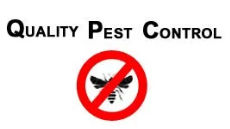There are numerous types of bugs that assault litchi. Bug (Tessaratoma javanica) is the most disastrous. It lays globular and off pink eggs, generally in a bundle of fourteen on the lower surface of leaves. Recently arose sprite is grimy white and delicate bodied bug yet variety changes to yellow-red following, not many days. The two grown-ups and sprite feed for the most part on delicate plant parts, for example, developing buds, leaf petioles, organic product stalks, and delicate parts of the litchi tree. Extreme taking care of causes drying of developing buds and delicate shoots and eventually natural product drop. The bugs when fed on the creating natural product, make the natural products fall for two or after three days. Pest control Bromley knows more about Litchi Bugs.

The executives
- This nuisance is battled by shaking the trees in winter, gathering and dropping them into lamp oil.
- The eggs of T. javanica are in a bunch and apparent which can be eliminated and obliterated.
- There are regular adversaries which parasitize 70 to 90 percent of eggs laid late in the season. The grown-ups are gone after by a few parasites, birds and red insects may likewise be utilized as a natural method for control.
- Assuming synthetic compounds are utilized, the planning of splashes is basic because the bugs fluctuate in their helplessness to bug spray at various seasons, contingent upon muscle versus fat substance and its temperament. A large number of these bugs might be controlled with dimethoate and fenthion.
Leaf Eating Weevils
Dim weevil is a polyphagous pest. Grown-up has a long nose with dim variety, however unfortunate flier yet exceptionally dynamic feeder on the leaves of litchi. It assaults leaves, shoots, and blooms. Grown-up weevils assemble on the delicate leaves and snack on unpredictable openings on the leaves and here and there consume the whole leaf leaving the midrib as it were. Another weevil recorded as of late at NRC Litchi, so far not appropriately distinguished, benefits from delicate leaves. The harm of this weevil is more serious at the hour of shoot rise.
The board
- The grubs of these weevils feed on the natural matter in the dirt underneath the overhang, henceforth, furrowing and uncovering these grubs diminishes the issue.
- Hand-picking of the grown-up weevils diminishes their concern somewhat.
- Whenever serious harm is seen, splashing of Carbaryl 2ml/l might be finished.
Litchi Nut Drill
Litchi nut drill is a polyphagous bug and pervades upwards of 33 organic product crops. The scale-like eggs are laid independently on the organic products. Recently incubated hatchling benefits from the organic product skin and afterwards burrows towards the seed. At the point when this happens in green organic products, the organic product drops, even though hatchling is probably going to have the option to create in the fallen organic product.
Ageing natural product for the most part doesn’t fall, and the hatchling frequently suffocates in the juice if the skin is infiltrated in the central area where the tissue is thickest. The skin tissue around the passage opening might give off an impression of being singed and such harm is in some cases wrongly ascribed to organic product fly. Mature natural products harmed by nut drills might stain different organic products in a group or those hanging beneath. One hatchling can cause maybe 10% more harm through this auxiliary staining impact. In juvenile organic products, the youthful hatchling drills straightforwardly into the seed which is eaten. A solitary hatchling might harm a few organic products, assuming that the organic products are little.




